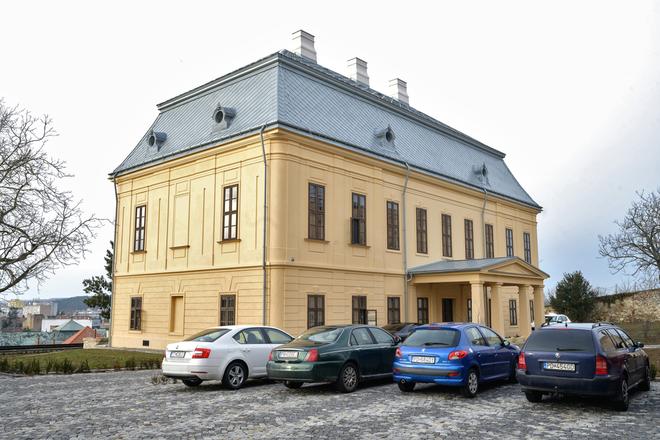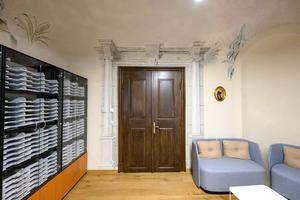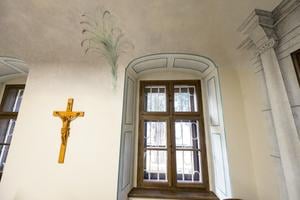The Archbishop's Palace under Nitra Castle has been restored to its original state almost 80 years after it was damaged by a bomb at the end of WWII.
View Slovakia’s oldest city through a kaleidoscopic lens with our Nitra city guide.
After it was hit in March 1945, only the torso remained of the two-storey building, which was built on the orders of Empress Maria Theresa.
Only the most preserved part of the ground floor was repaired, changing, until recently, the panorama of the historical centre of Nitra.
Work on completion of the palace, which was financed from money received from the land in the industrial park, began in August 2020.
The original statue is in the vestibule
From the outside, the palace today looks the same as when it was built in the late 18th century. The equestrian statue of Maria Theresa has also been returned to the balustrade.
The statue is a copy as the original was damaged by the bomb and its parts remained in its garden for many years.
In 1992, the original statue was restored and placed in the Presidential Palace garden. Today, although headless, it stands in the vestibule of the Archbishop Palace. Tibor Ujlacký, the spokesperson of the diocese, confirmed this. Tourists are very interested in its story.
Photos from interior have not been preserved
Historical photos capture only the exterior of the palace, not a single one showing the interior has been preserved. It was also not possible to obtain graphic documentation that would be useful in the restoration of the original material.
According to Rudolf Viršík, director of the regional monument office, only two architectural designs of the building's facade were found; one from 1778 and the other from 1779. The author was probably Franz Anton Hillebrandt, an architect from Vienna in the service of the imperial court.
Paintings preserved in one room
In the part of the building that remained standing after the bombing, vaults, parts of former tile ovens, fragments of painted wall and ceiling decoration, doorways including some doors and frames, and window openings with arched windows have been preserved.
Paintings were found only in one room. Their motif is illusory ancient architecture. "They date to the period of construction of the Archbishop's Palace, that is, from the beginning of the 1880s," said Viršík.
He added that the palace has a basement. "Significant destruction of the building caused by the bombing was also evident there. "
As part of the reconstruction, the rubble from the cellars was removed and the collapsed part of the vault was bricked up.
The room, which has decorated walls, is used today by the chancellor of the bishop's office.
The local school office has premises on the ground floor of the palace. The ecclesiastical court, the legal department, the auxiliary bishop's office, the archbishop's office and apartment, as well as the chapel, are on the upper floors.
"There is also an office for reporting the abuse of minors in the church," added Ujlacký.
©My Nitra
Spectacular Slovakia travel guides
A helping hand in the heart of Europe thanks to the Slovakia travel guide with more than 1,000 photos and hundreds of tourist spots.
A detailed travel guide to the Tatras introduces you to the whole region around the Tatra mountains, including attractions on the Polish side.
Lost in Bratislava? It's impossible with our City Guide!
Selected travel articles, podcasts, travellers' needs as well as other guides dedicated to Nitra, Trenčín Region, Trnava Region and Žilina Region.


 (source: TASR)
(source: TASR)


